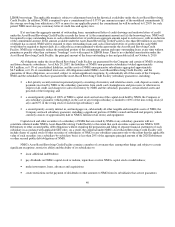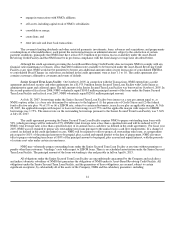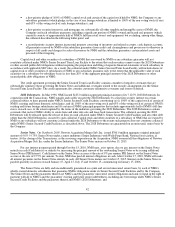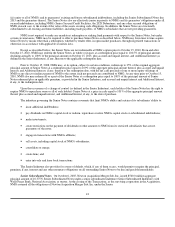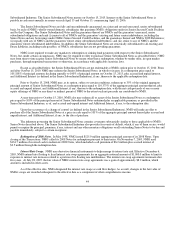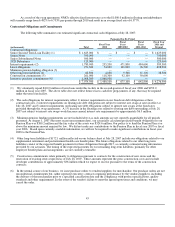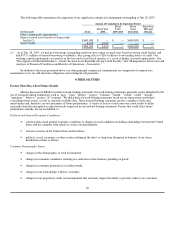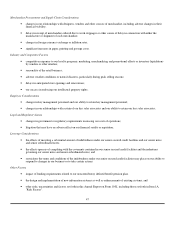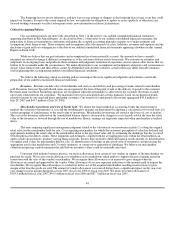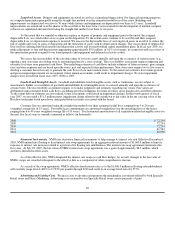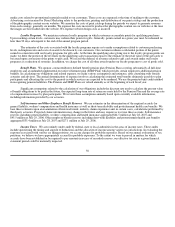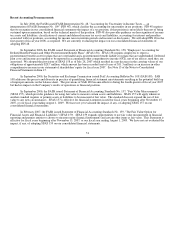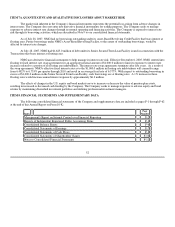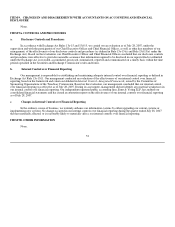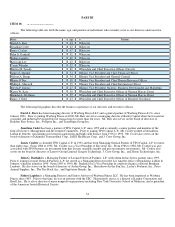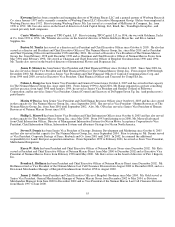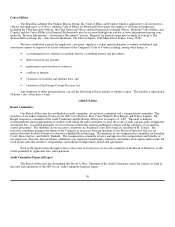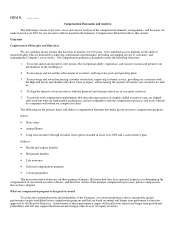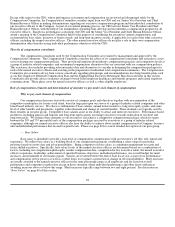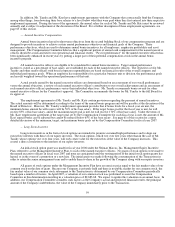Neiman Marcus 2006 Annual Report Download - page 53
Download and view the complete annual report
Please find page 53 of the 2006 Neiman Marcus annual report below. You can navigate through the pages in the report by either clicking on the pages listed below, or by using the keyword search tool below to find specific information within the annual report.
media costs related to promotional materials mailed to our customers. These costs are expensed at the time of mailing to the customer.
Advertising costs incurred by Direct Marketing relate to the production, printing and distribution of our print catalogs and the production
of the photographic content on our websites. We amortize the costs of print catalogs during the periods we expect to generate revenues
from such catalogs, generally six months. We expense the costs incurred to produce the photographic content on our websites at the time
the images are first loaded onto the website. We expense website design costs as incurred.
Loyalty Programs. We maintain customer loyalty programs in which customers accumulate points for qualifying purchases.
Upon reaching certain levels, customers may redeem their points for gifts. Generally, points earned in a given year must be redeemed no
later than 90 days subsequent to the end of the annual program period.
The estimates of the costs associated with the loyalty programs require us to make assumptions related to customer purchasing
levels, redemption rates and costs of awards to be chosen by our customers. Our customers redeem a substantial portion of the points
earned in connection with our loyalty programs for gift cards. At the time the qualifying sales giving rise to the loyalty program points are
made, we defer the portion of the revenues on the qualifying sales transactions equal to the estimate of the retail value of the gift cards to
be issued upon conversion of the points to gift cards. We record the deferral of revenues related to gift card awards under our loyalty
programs as a reduction of revenues. In addition, we charge the cost of all other awards under our loyalty programs to cost of goods sold.
Benefit Plans. We sponsor a noncontributory defined benefit pension plan (Pension Plan) covering substantially all full-time
employees and an unfunded supplemental executive retirement plan (SERP Plan) which provides certain employees additional pension
benefits. In calculating our obligations and related expense, we make various assumptions and estimates, after consulting with outside
actuaries and advisors. The annual determination of expense involves calculating the estimated total benefits ultimately payable to plan
participants and allocating this cost to the periods in which services are expected to be rendered. We use the projected unit credit method
in recognizing pension liabilities. The Pension and SERP Plans are valued annually as of the beginning of each fiscal year.
Significant assumptions related to the calculation of our obligations include the discount rate used to calculate the present value
of benefit obligations to be paid in the future, the expected long-term rate of return on assets held by the Pension Plan and the average rate
of compensation increase by plan participants. We review these assumptions annually based upon currently available information,
including information provided by our actuaries.
Self-insurance and Other Employee Benefit Reserves. We use estimates in the determination of the required accruals for
general liability, workers' compensation and health insurance as well as short-term disability and postretirement health care benefits. We
base these estimates upon an examination of historical trends, industry claims experience and, in certain cases, calculations performed by
third-party actuaries. Projected claims information may change in the future and may require us to revise these accruals. Self-insurance
reserves including general liability, workers' compensation and health insurance aggregated $44.5 million at July 28, 2007 and
$45.5 million at July 29, 2006. Other employee benefit reserves including short-term disability and postretirement health care benefits
aggregated $35.4 million at July 28, 2007 and $27.1 million at July 29, 2006.
Income Taxes. We are routinely under audit by federal, state or local authorities in the areas of income taxes. These audits
include questioning the timing and amount of deductions and the allocation of income among various tax jurisdictions. In evaluating the
exposure associated with various tax filing positions, we accrue charges for probable exposures. Based on our annual evaluations of tax
positions, we believe we have appropriately accrued for probable exposures. To the extent we were to prevail in matters for which
accruals have been established or be required to pay amounts in excess of recorded reserves, our effective tax rate in a given financial
statement period could be materially impacted.
50


